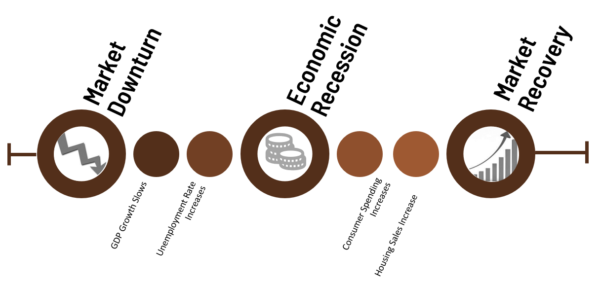According to the U.S. Labor Department, the unemployment rate in the U.S. has remained close to all-time lows in recent months. The most recent non-farm payroll data indicate an unemployment rate across the broad U.S. working population of 3.6%: a 50-year low. The news is part of a broad trend of improving economic fundamentals in the U.S. over the past decade. We have come a long way. Happily, since the global financial crisis, the U.S. unemployment rate has fallen from a peak of over 10.2% in 2009 to today’s lows. Thinking back to the headlines from 2008 and 2009, corporate layoffs were all too common on Wall Street and Main Street. From financial firms like Lehman Brothers and Bear Stearns to industrial giants like General Electric and General Motors, no corner of the corporate landscape was spared from significant job cuts. Fast forwarding to today, instead of layoffs we see increasing demand for labor, manifested in real wage growth. At 3.2% annual growth, wages accelerated this spring at the fastest pace since the financial crisis, according to FactSet. This trend is a positive for the broad base of U.S. consumers who will experience greater buying power. But the news is not totally rosy. While the jobs reports are generally a good thing and indicate a healthy U.S. economy, it may be difficult to improve much beyond our current environment. Indeed, we are already beginning to see signs of slowing job creation. The most recent jobs report, linked to the conditions in May, indicated an addition of just 75,000 jobs—below expectation. There is actually a concern that unemployment can get too low. Academics define “full employment” in an economy at different rates, but the general idea is that there will always be some number of people not working in the economy. The unemployment rate can’t actually get to 0. And as an economy reaches full employment, economic output from each new job begins to slow down. With unemployment near record-lows, it’s possible to seeing slowing economic growth because of this. As part of our assessment of the economy and the financial markets, we want to make sure that we are looking ahead. The unemployment rate, while a useful economic data point, is a lagging indicator. The rate tells us more about what has happened in the past than what will happen in the future. It's also important to understand that the market generally moves ahead of the overall economy as shown in this chart below:  Consequently, we continue to prepare our clients for a potential slower growth period ahead with our Recession Prep Scorecard. Please just include your information below if you would like us to assess your preparedness for a future downturn. [gravityform id="1" title="false" description="false"]
Consequently, we continue to prepare our clients for a potential slower growth period ahead with our Recession Prep Scorecard. Please just include your information below if you would like us to assess your preparedness for a future downturn. [gravityform id="1" title="false" description="false"]
U.S. Unemployment Rate Hits New Low
